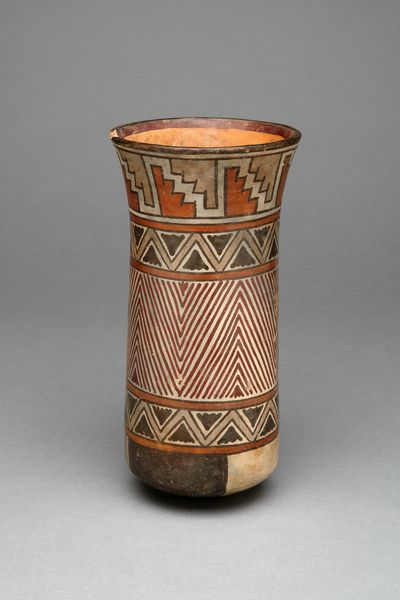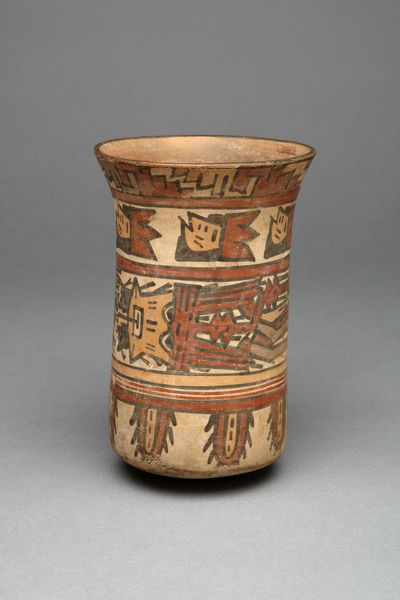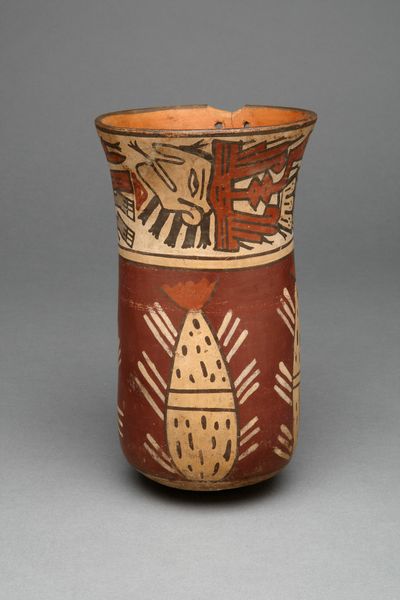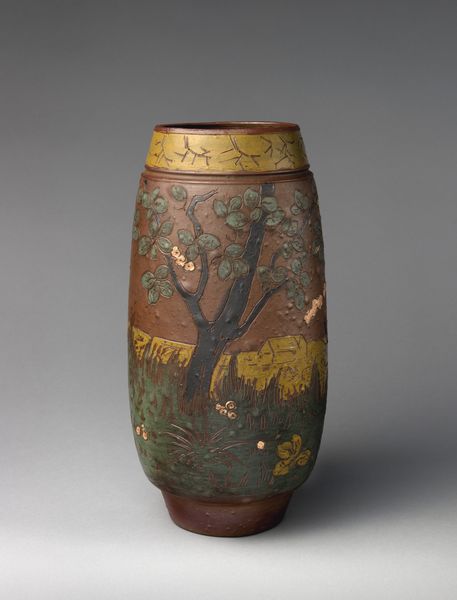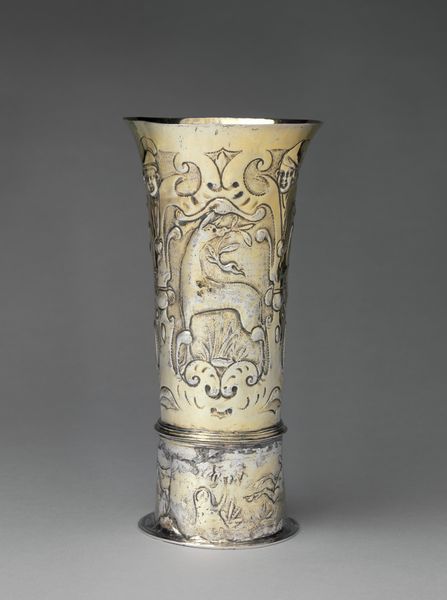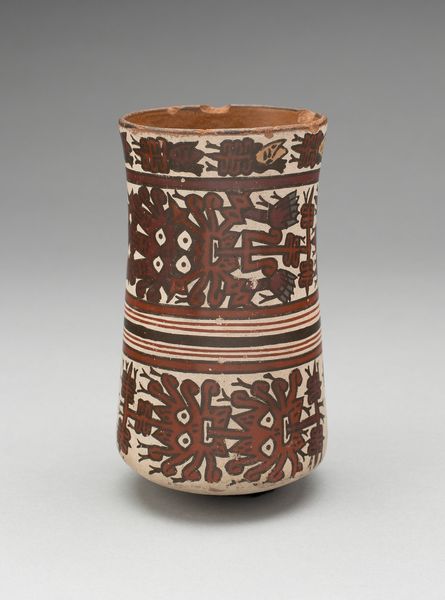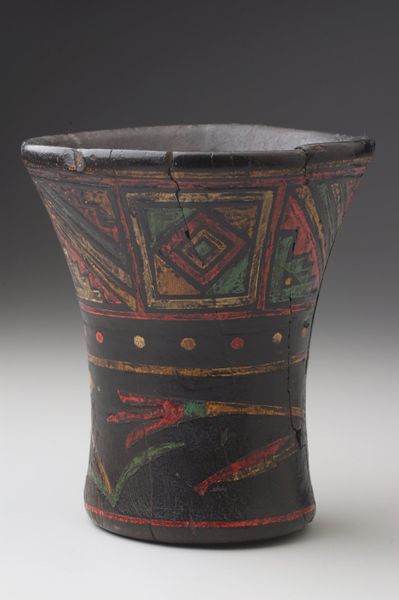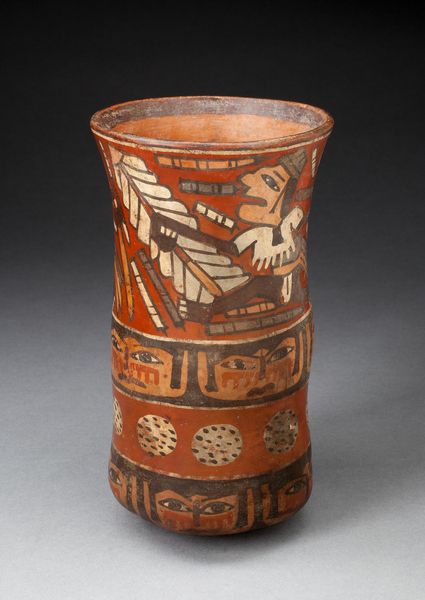
Dimensions: confirmed: 11 7/16 × 5 1/2 × 5 1/2 in., 3.1 lb. (29 × 14 × 14 cm, 1.4 kg)
Copyright: Public Domain
Editor: We're looking at a ceramic vase created between 1862 and 1872 by Christopher Dresser, called "Vase with 'Old Bogey' pattern." The geometric pattern makes me think of abstracted insects or maybe plants, and the whole thing has this very formal, decorative feel. What's your interpretation of it? Curator: I see it as a powerful statement against the dehumanizing effects of industrialization, and the search for the value of craft. This vase reflects Dresser’s advocacy for accessible design in everyday life. Think about the socio-economic implications: who had access to art, and how could design bridge those divides? Editor: That's interesting! I hadn’t thought about it that way. Is the Arts and Crafts movement meant to be a more democratic art form? Curator: Precisely. It champions craftsmanship over mass production and addresses class disparities, even promoting radical shifts in the roles of women as designers and artisans, making art more accessible and relevant. Do you think this particular work succeeds in being accessible? Editor: I think it's beautiful, but the gold and refined decoration seem more for a wealthy person's home. Was that a contradiction within the movement itself? Curator: Absolutely, it exposes tensions between ideals and lived realities. Dresser sought affordable design but often catered to bourgeois tastes, exposing contradictions within the Arts and Crafts movement's social goals. By acknowledging this, we confront inherent elitism, challenging notions of who benefits from art and design. What lessons can we draw from these contradictions for contemporary art? Editor: This has given me a new perspective on art's purpose, and the complicated story of design for all. Curator: It is essential that we continue to critique and strive for true inclusivity in the arts, both past and present.
Comments
No comments
Be the first to comment and join the conversation on the ultimate creative platform.
